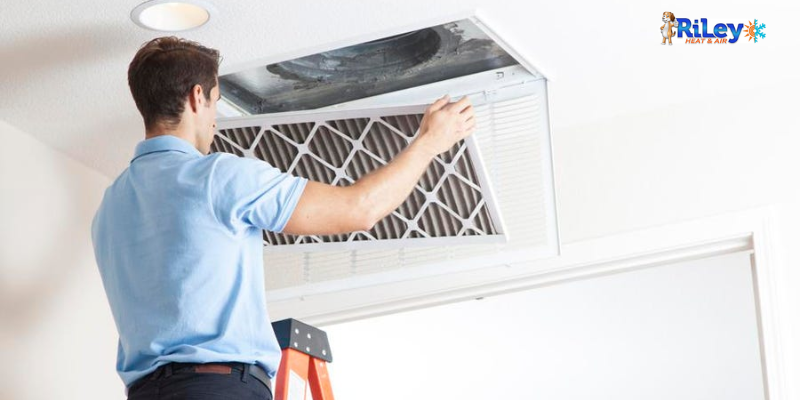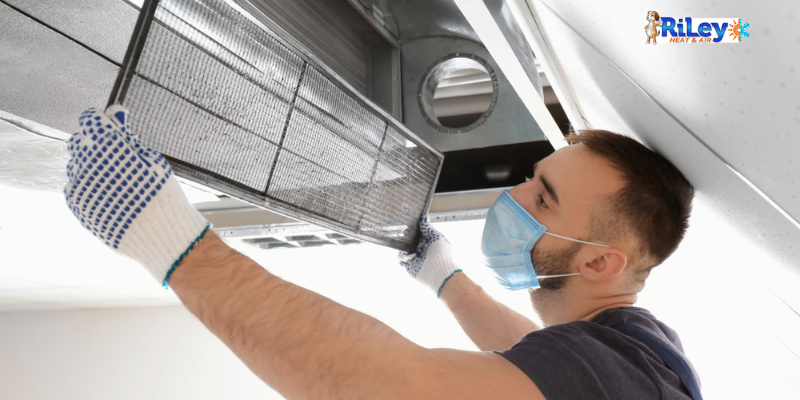
What procedures are involved in AC duct cleaning?
Like other air duct cleaning services, AC duct cleaning is essential for every homeowner. AC duct cleaning requires professional skills and equipment to clean the duct system, such as the supply, return vents, and intake. In addition, air duct cleaning typically includes cleaning the grills, HVAC unit, register, furnace, and fan.
Professionals recommend that all homeowners clean the air conditioner ducts as often as every three to five years. However, in a few cases, it is best to carry out air conditioning duct cleaning every two to three years for more excellent AC service and maintenance. Here are the step-by-step procedures involved in HVAC duct cleaning as you read further:What is duct cleaning?

Air duct cleaning involves cleaning various parts of a ducted system, particularly ducts. If you have a ducted or central heating and cooling system, you have a home system with ducts. Duct cleaning entails cleaning the return and supply air ducts, drip pans, coils, air handling units, and fans, or it involves the removal of mold, vermin, and dust from all the parts that connect to the air passageway.
Procedures for Cleaning AC Ducts
Step1
The first step involves the technician arriving at your home at the agreed-upon time to conduct a preliminary inspection of the air conditioning system. With such inspections, the technician can easily determine the best measure to run a vacuum hose from the truck-mounted equipment to the air conditioning unit. The technician usually connects the vacuum equipment through a window in the basement.
The process helps identify various vents through a simple test. For example, when you place a soft tissue inside the duct system and stick it to its surface, it is a return duct. But if it does not stick to the surface, it is a supply duct.Step 2
After the pre-inspection, which helps determine the best cleaning procedure for your home's AC ducts, the duct cleaning will begin. First, the technician will remove all the screws from the duct covers. Next, duct cleaning is done with a power drill or a screwdriver and setting up the vacuum collection unit, which is crucial to making room for negative air pressure in the air ducts. It also prevents dirt, dust, and other debris from spreading in the house during duct cleaning, and it collects the dirt into the vacuum unit to stop impurities from spreading.
The technician opens entry points and attaches a prepared vacuum hose to the central AC duct system. After the setup, the technician seals off the system between heating and cooling air and covers the air vents from all access points, which helps increase the effectiveness of the powerful vacuum. Afterward, the technician will agitate the duct walls, removing pollutants like pollen, dust, dirt, bacteria, and other icky substances that stick to the duct walls.Step 3
During the air duct cleaning, the duct system undergoes suction, and the technician cleans the vent using a 250-psi air compressor. AC duct cleaning is not a DIY project, especially if you need the right equipment and tools to carry out the tasks. The technician does the job better by wearing protective gear. Pieces of equipment like hearing gear, dust masks, and safety glasses can protect a duct cleaner from physical damage. Also, using protective equipment is a standard procedure for all duct cleaning companies.
Step 4
The air conditioning unit has both heating and cooling vents. The technician cleans the heating vents the same way as the cooling vents. After all the cleaning, the duct cleaning technician switches over the vacuum hose to use the grills and air that travels back to the vents. Cleaning can begin at the farthest air vent and progress to the nearest. For example, duct cleaning can begin on the top floor and work down to the basement.
Step 5
After the technician thoroughly cleans the air conditioning system, another activity will follow immediately at the end of the duct system. The technician uses a reverse air nozzle, a skipper or air snake, or a combination of air whips. In addition, some air duct cleaning companies have specially made air guns, which they use to shake off the remaining dirt in the duct system or remove debris from connecting pipes to clean out and free the central AC unit ducts.
Step 6
The scorpion rods or air whips are handy as the technician can insert them into the air conditioning duct system through the smallest possible openings found in a typical air conditioning duct system. Once the device connects through the duct system, it beats around the internal air conditioning system and loosens caked-on debris from the inside and outer surfaces of the duct. Next, the technicians use the air snake to blow off leftover dirt or heavy materials back to the vacuum hose.
Step 7
Afterward, the technician will clean all the air components that cause the system to operate smoothly, including the air conditioning coil, cooling fan, heat filter, compartments, and plenums. After this, the technician closes the access openings before running the air conditioner.
Step 8
Finally, the technician will return the hoses to the truck and secure the window, which was the entry point into your home. For finishing touches, the professional will not charge you extra for cleaning the air conditioner to make it appear neat. Finishing touches also include:
- Cleaning the access points.
- Re-installing the furnace with high-quality air filters.
- Carrying out the final inspection to ensure the job's outcome is perfect.
Conclusion
The procedure involved in AC duct cleaning sounds easy, but it is best to leave the job to expert technicians. Trying to do it yourself can be a problem because you will be dealing with complicated HVAC system components. If you suspect problems like vermin, bacteria, or mold in your air conditioning unit while cleaning your air conditioner, contact a technician immediately for a thorough inspection.








COMMENTS